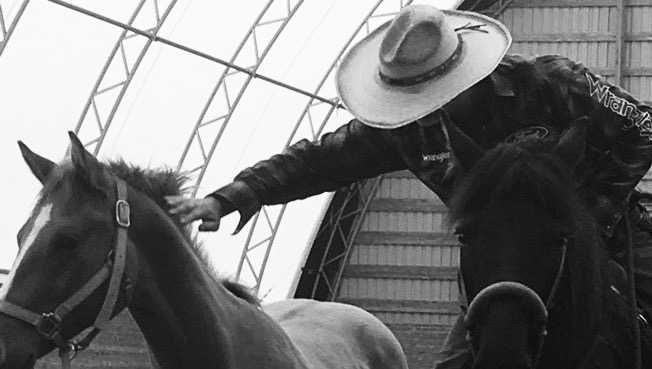I plan, eventually, to do more blogs on my interpretation or understanding of Ray Ray Hunt’s Approach: Feel, Timing, and True Horsemanship
I’ve spent years reading, riding, and refining my horsemanship to get closer to what I believe Ray Hunt was trying to share with us. His methods resonate deeply, and I hope this perspective gives you something to reflect on.
In this post, I want to focus on a few key ideas from Think Harmony with Horses, particularly Chapter 1 (pages 12–13). I believe what Ray is describing isn’t revolutionary—it’s simply good horsemanship, echoed across many other respected texts, both classic and modern.
Ray explains that we don’t teach horses how to walk, trot, lope, stand still, or back up—these are natural behaviors they practice on their own, often from a very young age. Instead, what we’re really doing is asking them to do these things on our timing. Ideally, we want our horses to respond to our cues as intuitively as our own limbs might—like we’re centaurs, moving as one body.
Of course, we can use spurs to drive them forward or jerk on the bit to make them stop or turn—but that approach is crude, even disrespectful to the dignity of the horse. The true horseman seeks to communicate at a much higher level—through feel. A soft, intuitive connection that flows naturally between horse and rider.
Watch a skilled rider on a finished bridle horse and you’ll often struggle to see the moment of cue. Sometimes it looks like no more than a passing thought—fluid, effortless, and nearly invisible.
Ray wrote, “The easy way for me to show him is to be a part of him…”—to be mentally and physically connected. Not imposing, not dominating. Just with the horse. He continues, “You get right down to the horse’s feet; you’re in time with his body…” Even beginners know the feeling—when the jarring trot smooths into a lope and suddenly your body syncs with the movement. For that brief moment, you’re in harmony. Until, of course, the trot returns and you bounce back into reality.
Now, imagine finding that feeling consistently—through every gait and transition—without needing whips, spurs, or harsh rein pressure. Ray believed that the best place to start building that kind of understanding is at the walk. It reminds me of Tom Dorrance’s famous words:
“First you go with the horse. Then the horse goes with you. Then you go together.”
The first part—going with the horse—is the hardest. And sadly, it’s the part many riders skip over or never fully grasp.
Ray once said in a video—I believe it was Turning Loose—that while he wasn’t a great dancer, he could follow a feel. If his partner was two-stepping, he was two-stepping. If she waltzed, he waltzed. As someone who spent years learning ballroom dancing, I get it. When you’re in proper frame and your timing is just right, your partner can feel every movement and respond without words. It’s a dance of trust and connection.
Ray once said:
“The horse knows. He knows the human twenty to one. It’s amazing how much he’ll get out of things, how he’ll fill in for as little as the human knows about him. How that horse can handle it has always been a mystery to me. Put yourself in his shoes to live your whole life where no one knows who you really are. Well, I haven’t met a human yet who compares to a horse…”
A Simple Exercise to Build Awareness and Feel
Try this on your own, even without a horse—it can help tune your body awareness, which is key to developing feel.
- On level ground, set up four cones in a rectangle about 6 feet wide and 20 feet long.
- Stand at one end, with your right foot just inside the right-hand cone. Look straight ahead and walk on a diagonal toward the far-left cone. Keep your head and eyes facing forward. Try this with eyes closed if safe.
- Pay attention to how your feet fall and how your hips naturally rotate as you walk.
Now repeat the same diagonal, but this time:
- Turn your head over your right shoulder. Note how your hips shift.
- Do the same looking over your left shoulder.
- Reverse directions and repeat, observing any new sensations.
You’ll notice that simply turning your head alters your posture and weight distribution, which in turn would affect what your horse feels through your legs. These subtle signals—intentional or not—are part of the language you’re constantly speaking to your horse.
Now try the exercise mounted. See how even slight changes in your body influence your horse’s movement and balance. It’s a fun and enlightening drill that helps build awareness and sensitivity—key ingredients in developing feel.
Here’s a link to great article about Ray.

